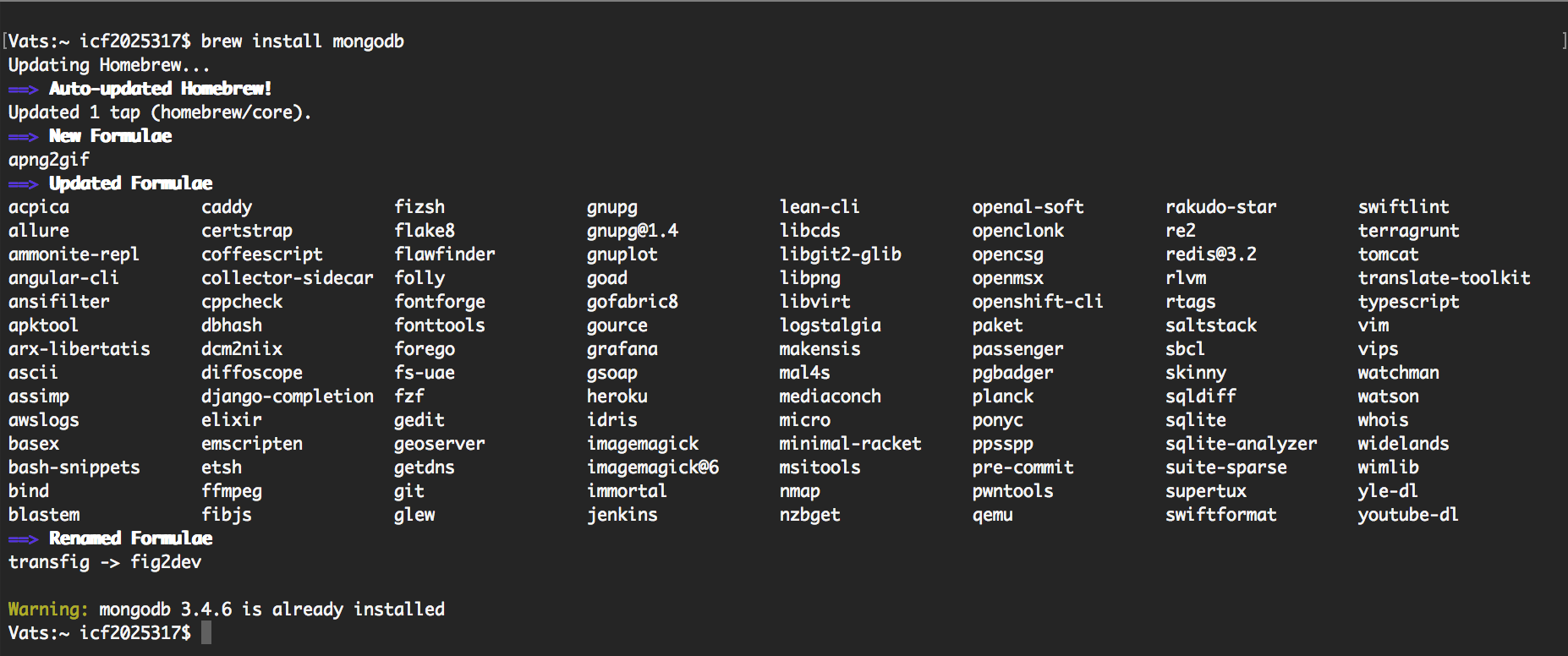What is MongoDB


MongoDB is a very JavaScript-friendly database. It exposes a JavaScript API we can use to create databases and collections of objects (called documents). It’s schemaless, which means you don’t need to pre-define a structure for the data before storing it. To install MongoDB in macOS, you will need to have Homebrew installed. After installing brew, follow the below step to install MongoDB: brew tap mongo/brew. From the terminal, run the following command: brew install email protected To start MongoDB from the terminal, run this command: brew services start email protected.
MongoDB is an open-source document database that belongs to a family of databases called NoSQL – not only SQL and provides high performance, high availability, and automatic scaling. Its document-oriented data model makes it easier to split up data across multiple servers.
In MongoDB, records are documents that behave a lot like JSON objects in JavaScript but use a variant called Binary JSON (BSON) that accommodates more data types. The document is a data structure composed of field and value pairs. Values in documents can be looked up by their field’s key and can be easily added/updated anytime which makes Mongo extremely flexible.
- To reinstall 4.0.31, run `brew reinstall mongodb` MongoDB is Running, now what? So you have MongoDB running but maybe you’re not really sure if it’s working and you’re a long way away from setting up any type of integration with your project.
- This is because brew services uses launchctl's plist files. Consequently, it does not pull in a fresh copy of your configuration file on each startup. Instead, we're directly invoking mongod, MongoDB's parent process, with a reference to our 'mongod.conf' using the -config flag.
This is different than SQL databases, Relational databases, like PostgreSQL, MySQL and, where fields correspond to columns in a table and individual records correspond to rows.
How to install MongoDB on MAC OS X
Install and update Homebrew – a package manager
- Open a new terminal and check if Homebrew is already installed on your computer
- Homebrew is a package manager which is used to install other software/packages on Mac It is like apt-get in Linux OS
- Run command in your terminal to check if Homebrew is already installed:
brew -v - If you are not able to install it, try Homebrew Installation by running the command
/usr/bin/ruby -e '$(curl -fsSL https://raw.githubusercontent.com/Homebrew/install/master/install)'- Brew update and check the updated version using
brew -v
Install and Run MongoDB with Homebrew
- After updating Homebrew install MongoDB by running the command:
brew install mongodb - Now create a Mongo data directory, This directory is where MongoDB stores database files, using the command:
sudo mkdir -p /data/db- Make sure that the /data/db directory has the right permissions, run the chown command to give the right access:
sudo chown -R `id -un` /data/db
Brew Update Mongodb

Run MongoD and Mongo
- To Start a Mongo process first run the Mongo daemon, in one of your terminal windows run
mongod. This should start the Mongo server. - Now Run the Mongo shell, with the Mongo daemon running in one terminal, type
mongoin another terminal window. This will run the Mongo shell which is an application to access data in MongoDB. - Great !! MongoDB is up and running now
- To stop type
ctrl+cin mongo daemonterminal
Set Mongo as a service on Mac
- Most importantly to run mongo as a service first stop mongo and mongod by using
ctrl+c - To run Mongo daemon as a service run command:
brew services start mongodb - After successfully run the command, Now restart the computer to set mongo as a service
Brew Mongodb Compass
I am sure this article helps you to install MongoDB on Mac OS using Homebrew. Step by Step points will help you to install and understand the process within minutes. I would like to hear your thoughts. Happy learning…
